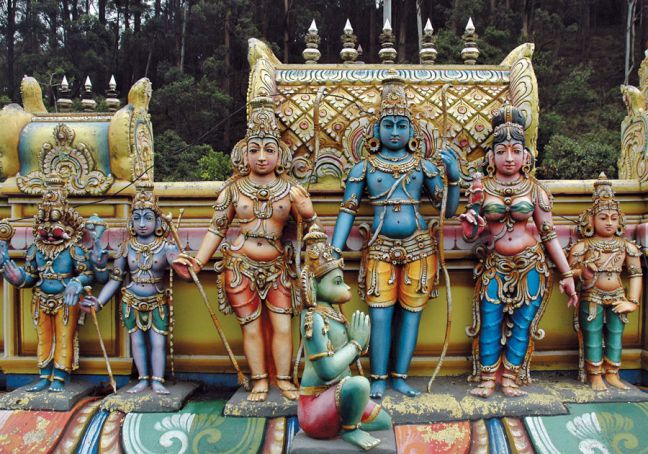Introduction
The Ramayana, one of the most celebrated epic narratives of ancient India, has left an indelible mark on various cultures around the world. This tale of adventure, love, and heroism has not only captivated the hearts of millions but has also played a pivotal role in shaping the cultural heritage of several nations. In this article, we will delve into the profound cultural influences of the Ramayana on different regions, exploring the richness it has brought to various societies.
Southeast Asian Cultures
India’s historical relationship with Southeast Asia established strong cultural connections, leading to the transmission of stories like the Ramayana. The Ramayana’s influence in Indonesia is prominently visible in traditional art forms, such as shadow puppetry (wayang kulit). The Javanese adaptation of the Ramayana, known as the Ramayana Ballet, continues to be performed and showcases the enduring impact of the epic.
Similarly, in Thailand, the Ramayana is revered as the national epic and is often depicted through classical dance forms like Khon and Lakhon. Thai temples are adorned with intricate murals depicting scenes from the Ramayana, showcasing its significance in Thai culture.
Cambodia also experienced the cultural influence of the Ramayana, particularly during the reign of the Khmer Empire. The Angkor Wat temple complex, a UNESCO World Heritage site, features elaborate bas-reliefs narrating episodes from the Ramayana. These artistic depictions highlight the enduring impact of the epic on Cambodian society.
South Asian Cultures
In its home country, India, the Ramayana is deeply ingrained in the fabric of society. Its influence can be witnessed in various aspects, including literature, art, music, dance, and religious practices. Numerous regional adaptations and retellings of the Ramayana exist, each adding its own local flavor and interpretations to the epic.
Nepal, with its close historical ties to India, also holds the Ramayana in high regard. The country boasts numerous temples dedicated to Lord Rama and Sita, the central characters of the epic. The annual celebration of Dashain, Nepal’s biggest festival, often incorporates dramatic enactments of the Ramayana, attracting thousands of devotees and spectators.
Sri Lanka, which has its own version of the Ramayana known as the Ramayana of Valmiki, considers the epic as a vital part of its cultural identity. The Seetha Amman Temple, located in Nuwara Eliya, is believed to be the site where Sita, Rama’s consort, was held captive. The temple complex attracts both local devotees and international visitors, reaffirming the profound impact of the Ramayana on Sri Lankan culture.
East Asian Cultures
The Ramayana’s influence extends to East Asia as well, with notable impact in China, Japan, and Korea. In China, the story of the Ramayana, known as the Sutra of Bodhisattva Guanyin’s Past Deeds, has been incorporated into Buddhist teachings. The tale has influenced Chinese opera and continues to be a source of inspiration for various artistic expressions.
In Japan, the Ramayana’s impact can be seen in the famous Noh theater, where plays based on the epic are performed. The concept of “Rama dances” has also found its way into Japanese traditional performing arts, showcasing the enduring cultural ties between India and Japan.
Korea, with its historical connections to China, adopted elements of the Ramayana through Buddhist scriptures. The tale has influenced traditional Korean dance forms, such as Buchaechum, where performers don colorful costumes and portray characters from the epic. The continued presence of the Ramayana in Korean cultural expressions reflects the lasting impact it has had on the nation.
Conclusion
The Ramayana’s influence transcends borders, enriching cultures far beyond its place of origin. From Southeast Asia to South Asia and East Asia, the epic has inspired and shaped diverse art forms, religious practices, and societal customs. Its enduring appeal and universal themes continue to resonate with people across continents, illustrating the profound and timeless impact of the Ramayana on the global cultural landscape.


